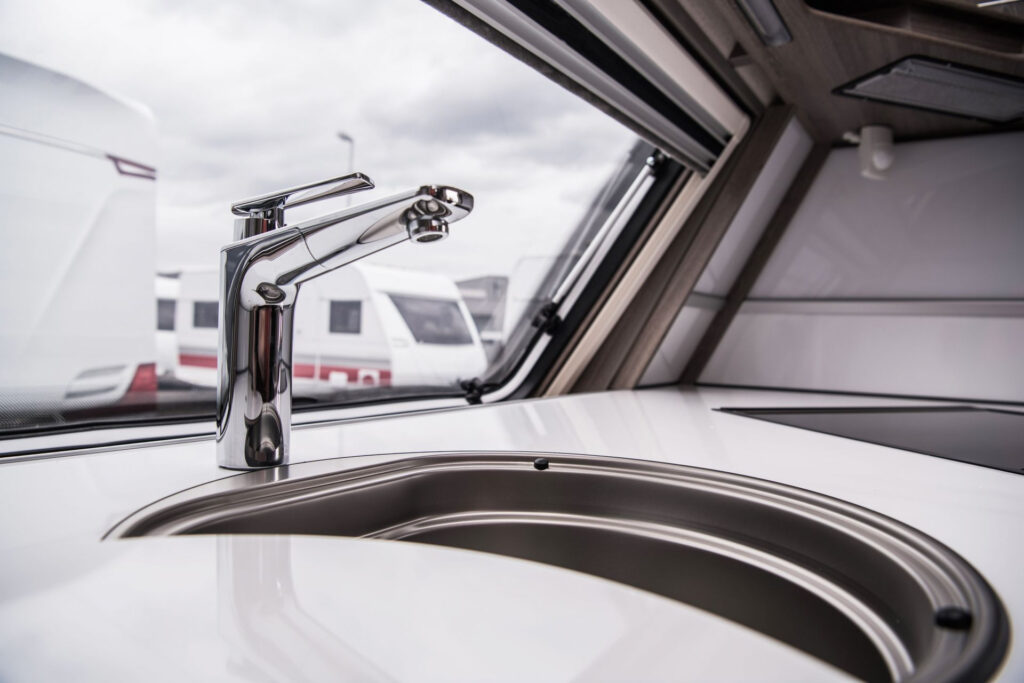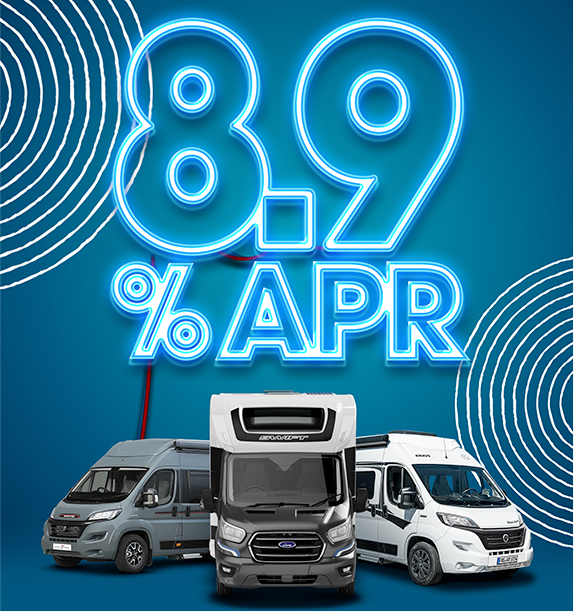Emptying Motorhome Waste: A Guide
4 minutes well spent

Your motorhome is a self-contained way of living, which means that your vehicle is not ‘plugged in’ to the operating systems and grids of society in quite the same way as a bricks and mortar home. There is no ‘plumbing in’ to sanitary systems and a motorhome does not enjoy visits from the binmen doing regular rubbish collections – and so on.
Any motorhome waste which has been generated (including grey water, black water and general domestic rubbish such as food packaging etc) has to be disposed of. It should be, of course, disposed of in a hygienic and environmentally friendly way. This is vitally important – in fact it is a legal requirement. Where you dump your waste water depends on the type of waste water and where you are located. In this edition of our blog we’ll explain what the waste is and how to get rid!
1. What is grey waste water?
The waste water from a property’s non-toilet plumbing system (or systems) is referred to as grey water. These systems include things like washing machines, bathroom hand basins, showers and baths. Grey water can be safely used for gardening purposes, provided it has been handled correctly.
2. What is black waste water?
Black water is the waste water from a property’s lavatory system. More specifically, this is the waste water from toilets that contains urine and faecal matter. In addition, water from kitchens and dishwashers is also referred to as black water, due to its contamination by pathogens. You should never use black water (from toilets, washing nappies or kitchen chores) for gardening purposes.
3. How do motorhomes handle grey water and black water?
A motorhome will usually have a grey water tank beneath the chassis to store waste water from the washroom’s shower and sink. This water can stay in the tank until it is full, but then must be emptied. The grey water tank should have a tap (or hose) attachment, which makes emptying very easy.
Motorhomes these days have a built-in toilet as standard, and the plumbing from this usually leads to a black water tank. This is a cassette-style holding tank which stores the waste (where it can be treated using a chemical or eco additive) and, when necessary, can easily be removed via an external door on the motorhome. The black water cassette tank will have a handle and may have wheels for ease of mobility. Some larger motorhomes might even have a black water tank fitted beneath the chassis.
4. How to empty a motorhome waste water tank
In simple terms, grey water can often go down drains and black water must be disposed of at a chemical toilet disposal point. When you are out and about on the road, you are most likely to find both of these facilities at a campsite.
If you possibly can, it makes sense to spend the first and last nights of a (longer) trip at a campsite so that you can fill up with fresh water on the first, and dispose of grey water and black water waste correctly on the last (though you may not need to spend the first night at a site, as you might be able to fill up at home).
5. Grey water disposal
The UK has different drainage systems for rainwater and grey water; therefore you should not simply use a drain you have found at the roadside. If you do find a grey water drain you can pull up over it and release your tank. You should certainly never empty black water into a grey water drain.
Alternatively, you can ‘decant’ the grey water waste into a portable tank and carry that to the appropriate drain or disposal point. CAMpRA (the Campaign for Real Aires in the UK) offers a guide to the country’s disposal points and aires (an area specifically for motorhome users where there are often facilities for emptying motorhome waste water, with the name derived from the French term “aires de service”, i.e. “areas of service”).
6. How do you empty a motorhome toilet?
You should never pour toilet waste into natural waters – i.e. streams, rivers, lochs or even into undergrowth and hedges. By doing so you can harm the vegetation and the waste may pose a health risk. When it’s time to sort out the motorhome toilet, use a designated campsite facility or an aires service point.
Alternatively, as a last resort you could use public toilets to dispose of the waste, though this is not recommended as there are generally no facilities to clean up any mess caused by spillage. If you do use this method you should undertake it extremely carefully. Once you have removed the black water tank from its storage, you can empty a little at a time into a toilet and then flush, and then repeat. For logistical reasons it is not sensible to use really busy public toilets at main artery motorway service stations to undertake this task. You can use this map to find more remote or quiet public toilets.
7. How do I dispose of waste when motorhoming in Europe?
If you are travelling in Europe there is a system of motorhome service points, usually at motorway service stations, where you can pay a fee and dispose of your waste (as well as fill up with fresh water).
We’ve got 100s of new and used stock for you to discover


